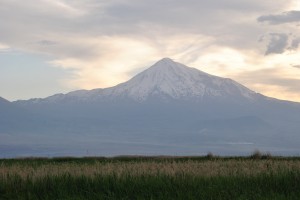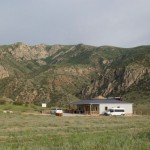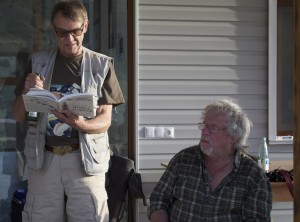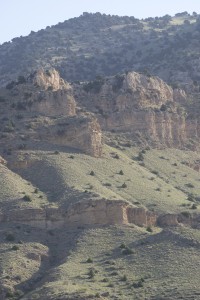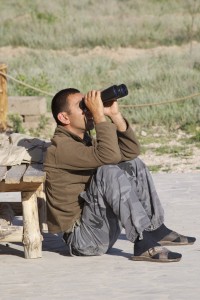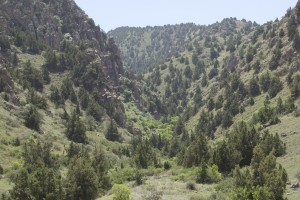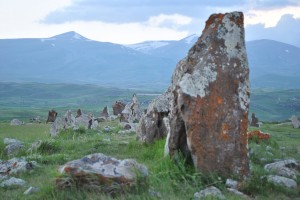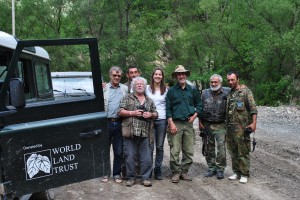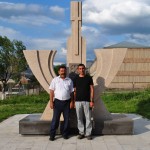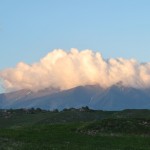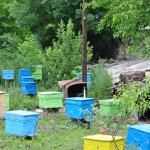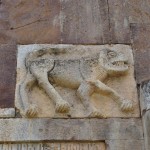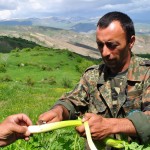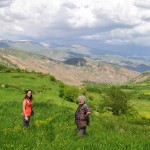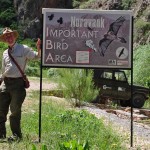Driving up the steep red-rock track to the FPWC eco centre lodge on Caucasus Wildlife Refuge near the village of Urtsadzor, in the dry mountains of central Armenia, was like arriving on the set of a spaghetti western: the light was harsh and the rocks were stacked like giant building blocks 2000m high. I expected Sergio Leone to appear at the top of ravine at any moment. The landscape looked as if the rigors of the minus 32 degree winters and the plus 40 summers had simply leached the colour out of it. The dry slopes appeared denuded and the rocky heights bleached into the pale sky.
We dumped our bags in our very nice rooms (I think I’d expected some sort of hut with three wall and a semi functioning roof, not a triumph of modern sustainable architecture) and then sat on the terrace.
Bill Oddie, Simon Barnes and WLT (World Land Trust) CEO, John Burton were soon birding away… black headed bunting, black wheatear, lesser grey shrike, short toed eagle…. Within seconds they were having recreational arguments about the true identity of bird shapes too distant and too fleeting for me to even see. Really, I just can’t keep up.
So I pootled to the edge of the terrace and looked down, and this was the moment that the magic of Armenia really began to work on me, because in the space of a square meter there were maybe fifteen or more different kinds of plants. As I sat puzzling them out in my Caucasian flora (using the time honoured non-botanist technique of flicking-through-the-pictures-till-you-find-a-match) I realized that the half the plants I was looking at were endemics, species found no-where else on earth. I began to be enchanted.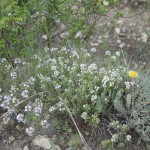
That first day, the enchantments went on and on: the nosferatu shapes of lammergeiers floating over cliffs whose height you didn’t appreciate until the vultures’ two and a half meter wingspan was as lost as an ant against them; clouds of wild roses, filling a gully with their scent; the voice of a herdsman defining the space and the silence of the valley as he rounded up his cattle ready for the night. (why? because Armenia is still properly wild, and their are bears and wolves that will eat your animals if you don’t pay attention). Then, as the sun sank and took a slant on the mountainsides, slopes that had appeared to be bare, raw-sienna scree, were suddenly shown to be clothed in a lovely blue-green peach-fuzz of vegetation. In the cooler air of dusk, the hardy little plants breathed out their scents – camphor, lavender and thyme, like sharp incense. For me, that moment when sunset revealed a truth about the life and diversity of the dry mountains, was when I really, really lost my heart to Armenia.
I’d come to Armenia as part of my role as World Land Trust Ambassador, but also to research the location for my next children’s book, about the rare (rare to almost vanishing point) Caucasian Leopard. I knew the place and its people would give me the detail I needed to make a story live and breathe.
I knew of course I wouldn’t see a leopard – WLT’s partner organisation FPWC, (Foundation for the Preservation of Wildlife and Cultural Assets) only know they are there from animals caught on camera trap videos; I didn’t even expect to see the leopards favourite meal, the bezoar goat, almost as rare as its predator. But the next morning, as I sat in the daze of Armenia Love, Manuk Manukyan lynchpin of FPWC, and an extraordinary naturalist, looked through his binoculars and said ‘Bezoar!’
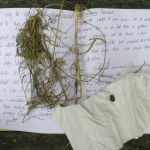 bezoars had stood, will always be one of the most wonderful and precious two hours of my life. At the top, we gave our sure footed obedient little horses a rest and looked out at a view the lammergeiers get. I collected bezoar goat poo, because not everyone can carry faeces of world class rarity in their pocket.
bezoars had stood, will always be one of the most wonderful and precious two hours of my life. At the top, we gave our sure footed obedient little horses a rest and looked out at a view the lammergeiers get. I collected bezoar goat poo, because not everyone can carry faeces of world class rarity in their pocket.
These are the places that are threatened in Armenia now, these transcendent mountain spaces, where plants from Europe and Asia mix to make a rich cocktail of biodiversity. (6500 plant species in the Caucusus). Once the junipers grew unmolested, slowly reaching the height of a hedge in 300 years, Bezoar goats grazed and clashed their sabre horns, lynx, wolves, bears and leopards hunted. Some of the most ancient churches in Armenia have stone carvings of animals that were once commonplace on the mountain heights. But now, the poorest people have been driven off their common lands by changes in ownership, the way the British poor were in John Clare’s day, and the mountain heights are the only place they can go to graze their stock, find firewood, plants to eat and animals to hunt. There’s poaching too – oligarchs with too much money and not enough sense drop in by helicopter to plunder the precious rarity of Armenia’s gorgeous big mammals.
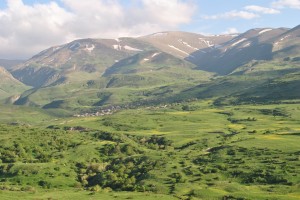 So FPWC has its hands full. To secure the future of the leopard, a mountain corridor needs to be left undisturbed along the spine of Armenia, one day perhaps connecting with Georgia to the North and Iran to the South. Mountainsides, woodlands and alpine pasture must be relieved of their current heavy burden of human use. It’s a huge task, but FPWC, supported by projects manager for WLT Mary McEvoy, and CEO John, and by IUCN Netherlands, are stepping up to shoulder this massive burden. The 1701 hectare Caucasian Wildlife Refuge is just the start – Manuk and FPWC director Ruben Khatchatryan have plans to lease other tracts of land to set up reserves and work with villagers to reduce their impact on the landscape and its wildlife.
So FPWC has its hands full. To secure the future of the leopard, a mountain corridor needs to be left undisturbed along the spine of Armenia, one day perhaps connecting with Georgia to the North and Iran to the South. Mountainsides, woodlands and alpine pasture must be relieved of their current heavy burden of human use. It’s a huge task, but FPWC, supported by projects manager for WLT Mary McEvoy, and CEO John, and by IUCN Netherlands, are stepping up to shoulder this massive burden. The 1701 hectare Caucasian Wildlife Refuge is just the start – Manuk and FPWC director Ruben Khatchatryan have plans to lease other tracts of land to set up reserves and work with villagers to reduce their impact on the landscape and its wildlife.
Luckily, Armenians are still close to their land. Most rural families depend on their gardens and their animals for their food so they are open to changes that can improve the way the land is used, changes that can improve their lives as well as having conservation benefits. Among FPWC plans are community woodlands to generate firewood and protect ancient juniper trees, sustainable energy generation and nurseries for native plants. FPWC has already had a direct practical impact by setting up the Caucasus Wildlife Refuge, protecting the wildlife within it from exploitation and poaching. It’s seeding the future of conservation too, by running eco clubs to educate children about environmental issues and training them to be the wildlife film-makers of the future.
FPWC were the most wonderful hosts – they showed us so much of their fabulous country: ravishingly beautiful mountain scenery and huge variety of vegetation types from semi desert, to alpine meadow and lush forest; vultures hanging at the lip of gorges like something out of Game of Thrones; herds of sheep streaming into villages for the night; pink starlings flying over waterfalls; white storks on a backdrop of Noah’s mountain, Ararat. At the end of our week traveling round the country I was punch drunk with relentless loveliness, saturated with hundreds of memories to carry home, too many to tell. (and a camera full of plants that only the botanist Eleonora Gabrielian who I met on our last day in Armenia, could identify ) But there are four things that I will keep at the top of the file in my heart marked ‘Armenia’.
 The first is a tiny seed head of a minute scabious, growing on the arid slopes around the Eco centre. Mary and I spotted it on our last morning and sat looking at its diamond cluster loveliness. It symbolised for me the endless detail in the Armenian landscape that I so adored, like a long, long series of secret spells waiting to be learned and chanted.
The first is a tiny seed head of a minute scabious, growing on the arid slopes around the Eco centre. Mary and I spotted it on our last morning and sat looking at its diamond cluster loveliness. It symbolised for me the endless detail in the Armenian landscape that I so adored, like a long, long series of secret spells waiting to be learned and chanted.
The second is a stop we made in village in Ngorno Karabash where I wanted to photograph the fifty 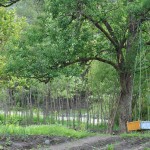 or so beehives that stood to the side of a small house. (LOADS of beehives in Armenia).
or so beehives that stood to the side of a small house. (LOADS of beehives in Armenia). 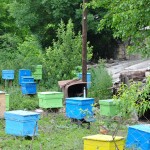 We drew up in our two landrovers and piled out, disturbing the quiet cultivation of a woman, her husband and little girl. Far from being put out, they were so welcoming. The woman particularly struck me, her open face with clear dark eyes under her sun hat, shone with warmth and a deep, sweet humanity. Although we didn’t share a single word of common language, and only spent a fragment of time smiling at each other, some small piece of real, true communication passed between us; not complicated but a simple acknowledgement of each other’s existence and the glory of being up from the dirt briefly together on this dear warm spring day.
We drew up in our two landrovers and piled out, disturbing the quiet cultivation of a woman, her husband and little girl. Far from being put out, they were so welcoming. The woman particularly struck me, her open face with clear dark eyes under her sun hat, shone with warmth and a deep, sweet humanity. Although we didn’t share a single word of common language, and only spent a fragment of time smiling at each other, some small piece of real, true communication passed between us; not complicated but a simple acknowledgement of each other’s existence and the glory of being up from the dirt briefly together on this dear warm spring day.
The third is the face of the botanist Eleanora Gabrielian, who I was privilaged to meet at the eco 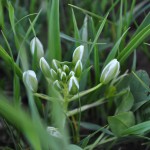 centre on the last day. Dr Gabrielian has studied the flora of Armenia and the whole Caucusus for 60 years and described all 6500 species of its plants. She collected a whole pile of plant sprigs to share with me, and talked me through them all with a delight and heart popping enthusiasm that lit up the day. My notebook is bulging with the plants she gave me, still holding the incense smell of the mountains and carrying a cloud of her wonderful energy.
centre on the last day. Dr Gabrielian has studied the flora of Armenia and the whole Caucusus for 60 years and described all 6500 species of its plants. She collected a whole pile of plant sprigs to share with me, and talked me through them all with a delight and heart popping enthusiasm that lit up the day. My notebook is bulging with the plants she gave me, still holding the incense smell of the mountains and carrying a cloud of her wonderful energy.
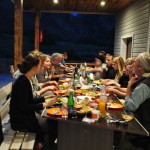 And the fourth is a strong sense of the bonds built across countries and cultures by a shared passion for the natural world, and the joint enterprises of trying to protect it. Time and again I witnessed the strength and warmth of the professional friendships between FPWC rangers and staff and their visiting colleagues from WLT in the UK. One evening Ruben played an Armenian tune on bagpipes, the mayor of Urtsadzor raised toasts to, in succession, ‘beautiful ladies and strong men’, ‘friendship’, and ‘ Armenian nature’, Bill Oddie did a jazz drum solo, and the IUCN Netherlands contingent sang the Dutch version of happy birthday to you. This is what real, lasting conservation looks like, this is how it is forged, not in committee rooms, or on computer screens, not in the wording of treaties and laws, but in the relationships made between individuals who grow to know, respect and love each other and work together for the same thing.
And the fourth is a strong sense of the bonds built across countries and cultures by a shared passion for the natural world, and the joint enterprises of trying to protect it. Time and again I witnessed the strength and warmth of the professional friendships between FPWC rangers and staff and their visiting colleagues from WLT in the UK. One evening Ruben played an Armenian tune on bagpipes, the mayor of Urtsadzor raised toasts to, in succession, ‘beautiful ladies and strong men’, ‘friendship’, and ‘ Armenian nature’, Bill Oddie did a jazz drum solo, and the IUCN Netherlands contingent sang the Dutch version of happy birthday to you. This is what real, lasting conservation looks like, this is how it is forged, not in committee rooms, or on computer screens, not in the wording of treaties and laws, but in the relationships made between individuals who grow to know, respect and love each other and work together for the same thing.
On our last afternoon in the mountains Mary, Manuk and I visited the mayor in his Town Hall, (also Manuk’s grand parents for home made peach cognac…but that’s another story). He’s a larger than life character with a huge moustache.
If Stalin had had a sweet natured, very jolly brother, this is what he would have looked like. His intention, he explained, was to make his town into an ‘eco paradise’. As we toured the town hall we heard the girls choir practicing and peeped in. The girls sang us an Amenian song, linking little fingers and stepping in time to the music. There wasn’t a trace of pop music aping in their voices, nor of the childish piping UK children produce; they sang loud, low and strong, every note riven through with their identity as Armenians. This celebration of Armenian culture is an important part of what FWPC do – they understand that landscapes, wildlife and human culture are linked in mutual dependence; so it’s just possible that Ustradzoar, with FPWC help and WLT’s support, will become the mayor’s vision of eco paradise. But it will be homegrown, a paradise made in Armenia, dreamed with Armenian dreams, and all the better and more lasting, for it.
